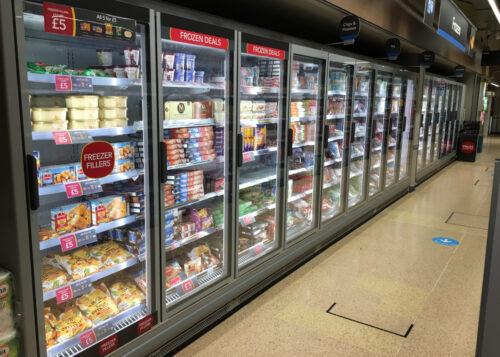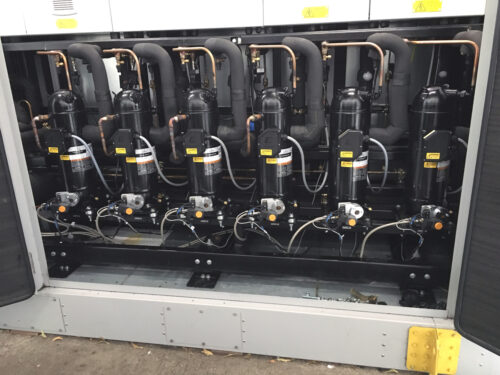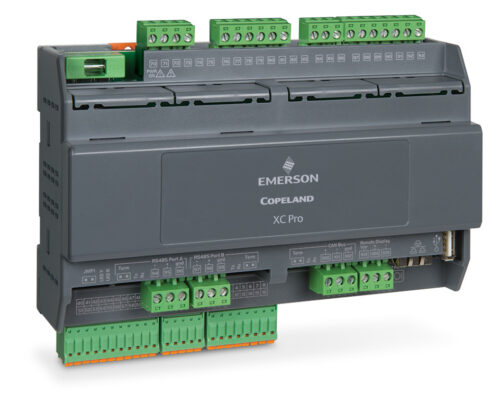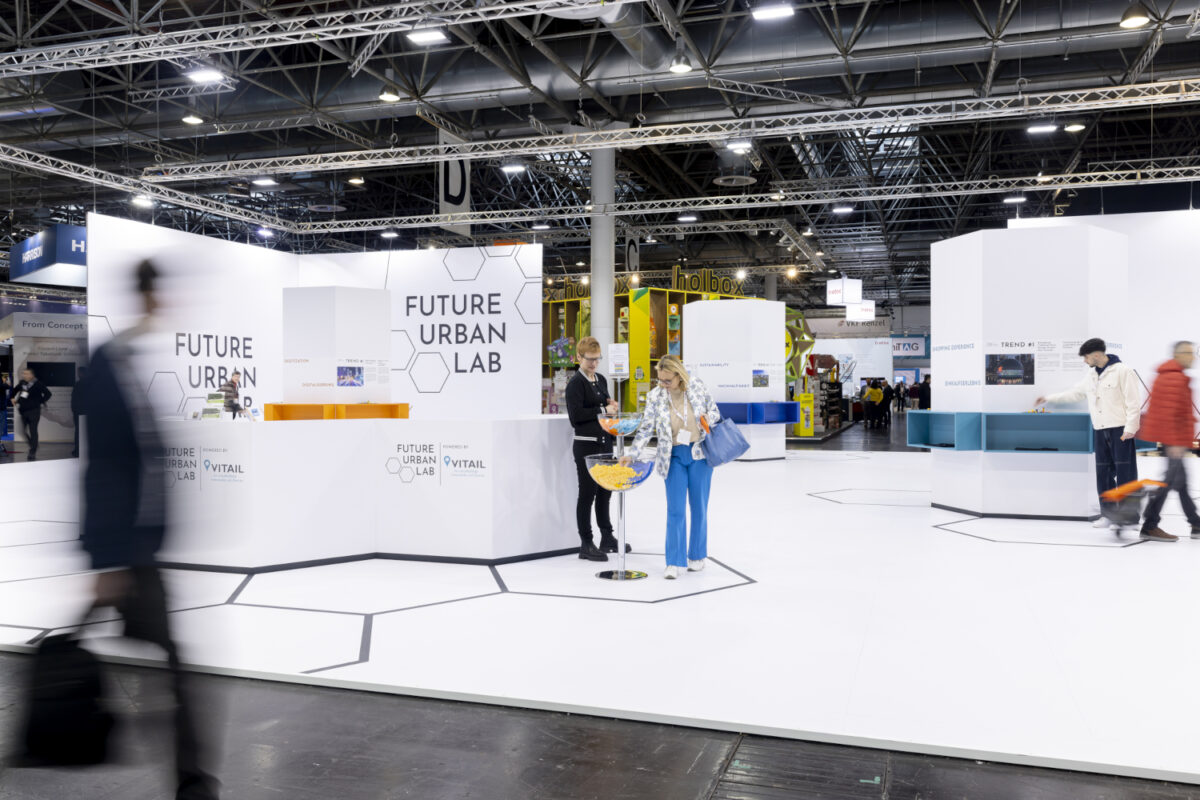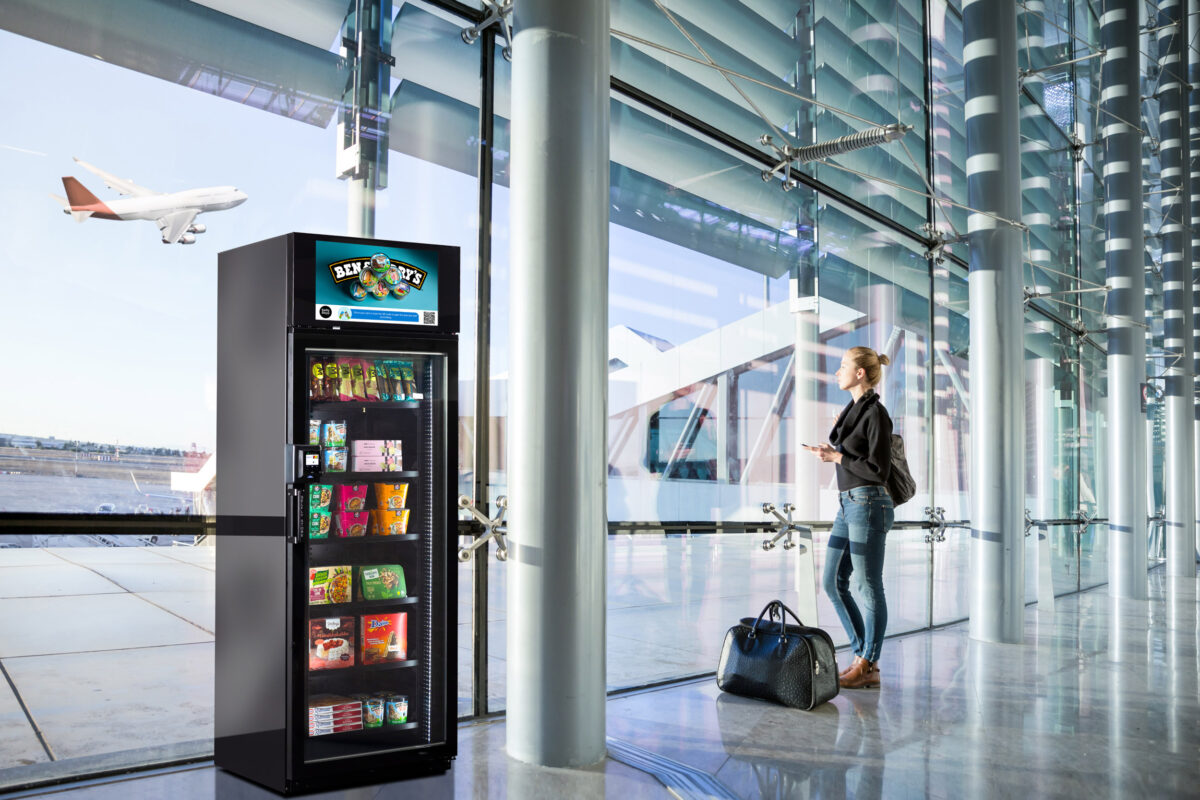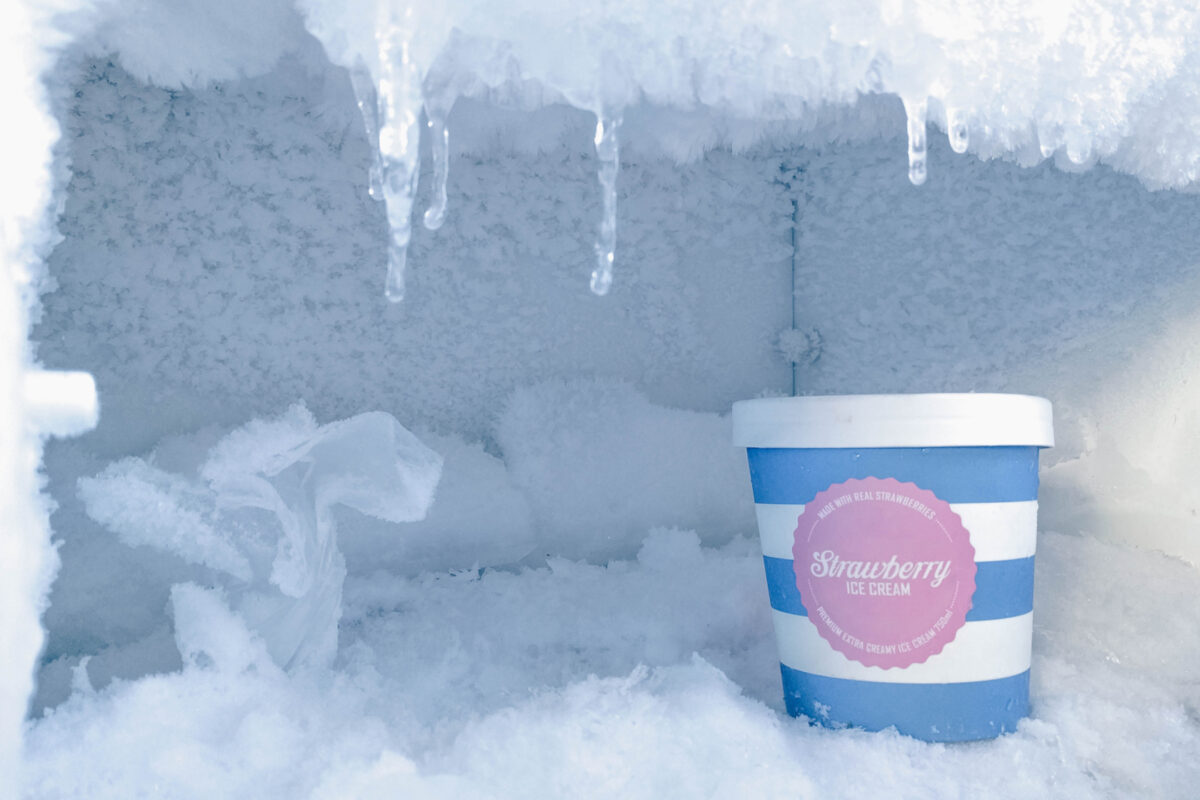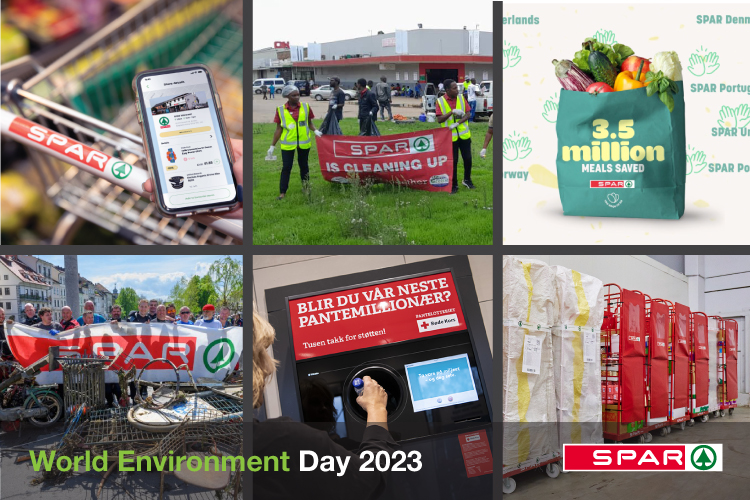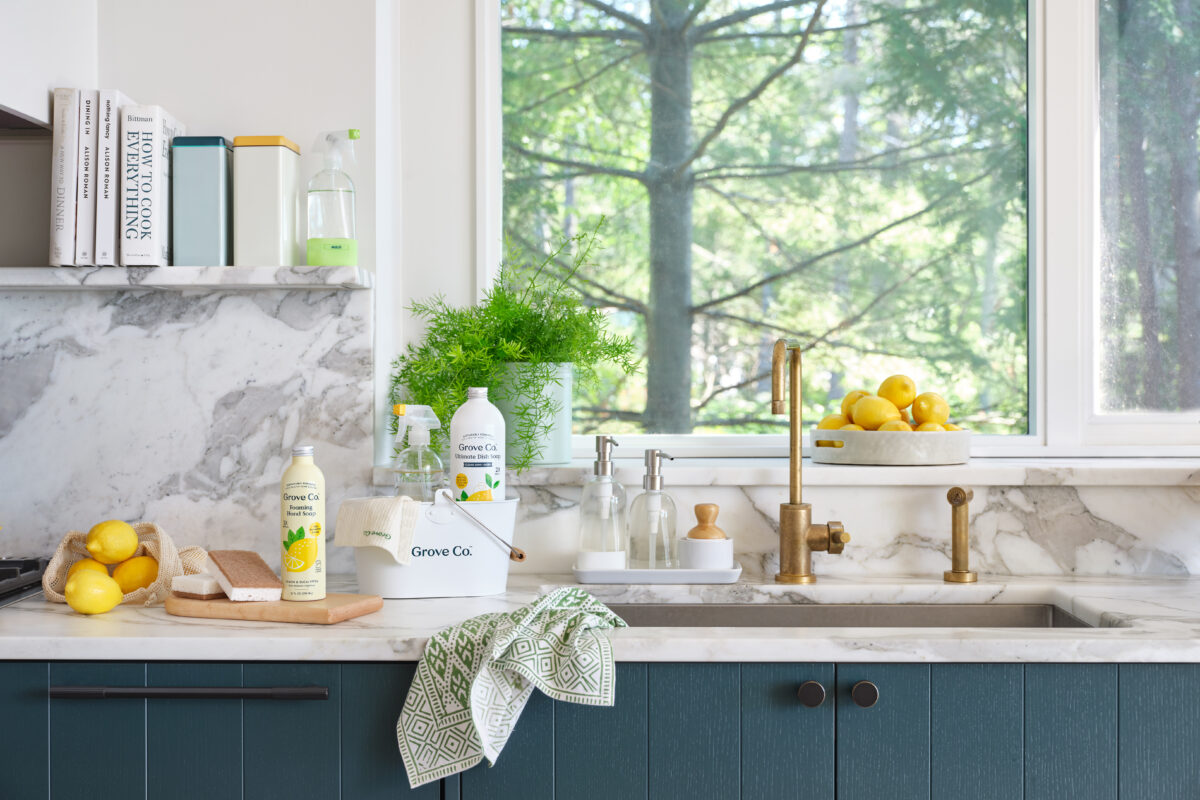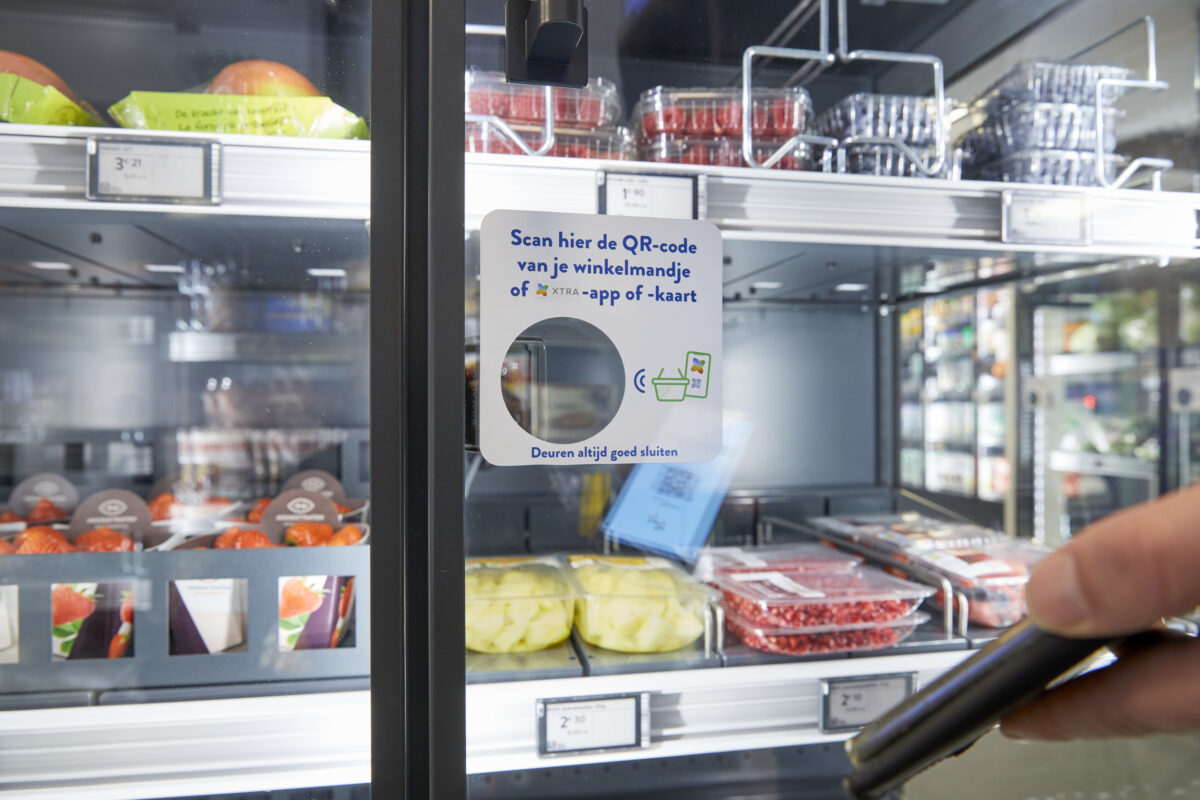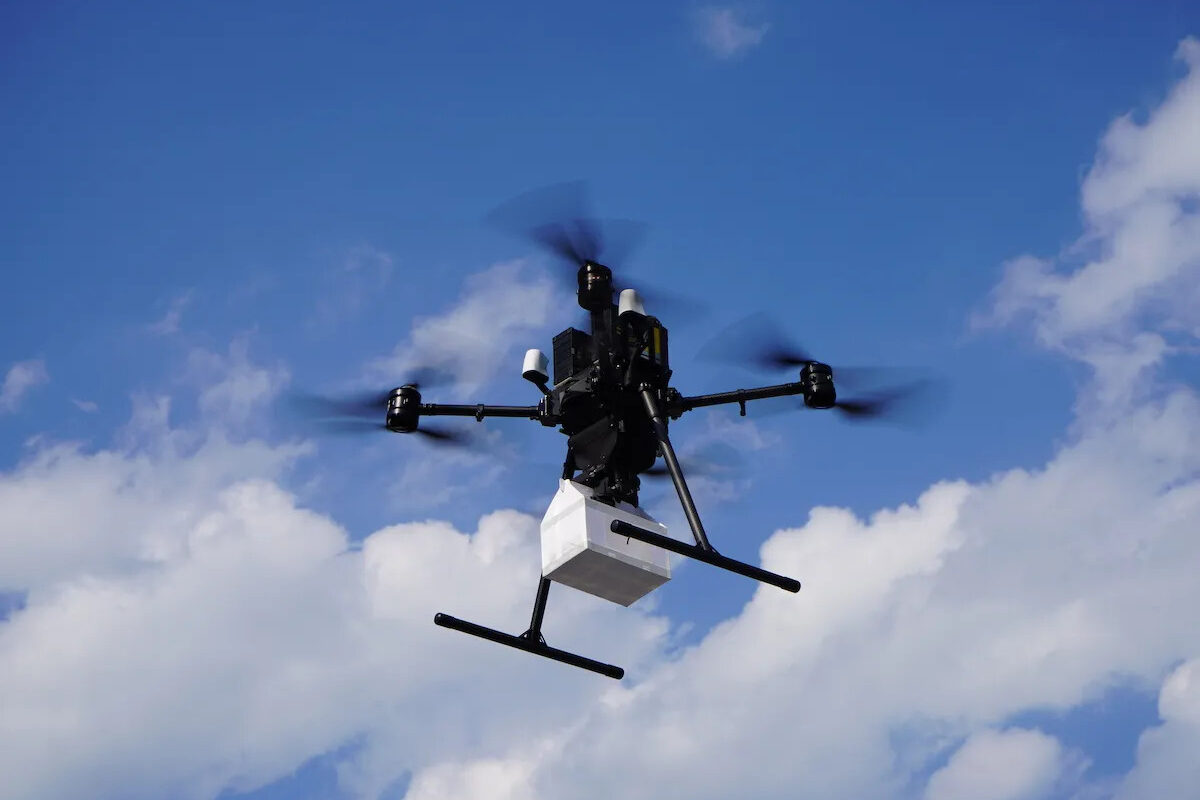Innovative technology now brings efficient CO2 refrigeration to smaller shops
by Julia Pott (exclusively for EuroShop.mag)
Climate change is hitting hard. Temperature records are being continually broken. This presents food retailers with the challenge of cooling goods as reliably, efficiently and sustainably as possible. This is where the further development of cooling technologies is called for.
CO2: The problem and the solution
In addition to the traditional range of frozen and chilled products, chilled convenience foods are also becoming more and more in demand in the food trade. This is reflected in the assortments of large retail chains as well as in the areas of small convenience stores.

Oliver Liegeois, Director Marketing Refrigeration at technology and engineering company Emerson.
© Emerson
Still, retailers must ensure a perfect cold chain to keep products fresh and durable. This demand is encountering more frequent heat waves, even in temperate regions. So how do you prevent refrigeration from becoming a Herculean task?
“In general, it’s worth considering adapting plant design to the increased outdoor temperatures,” explains Oliver Liegeois, director of marketing refrigeration at technology and engineering company Emerson. “New technologies such as CO2 scroll or ejector technology can make a valuable contribution to this.” More on these new technologies later.
Retailers serving small store formats need solutions that are just as effective and affordable as those equipping large areas with long refrigerated counters. “Here, it’s up to all parties involved – equipment builders and manufacturers together with food retailers – to find a sensible balance between system reliability and cost optimization,” Liegeois says.
The Co-operative Group (Co-op) supermarket chain in the United Kingdom decided to test a new solution. It was prompted by a switch from refrigeration systems based on hydrofluorocarbons to those using CO2 as a refrigerant. This has several advantages, as Liegeois explains: “CO2 is a natural refrigerant with an extremely low global warming potential, it is non-flammable, highly available and highly efficient.” At high ambient temperatures, however, other refrigerants used to be more efficient, and in addition, “CO2 requires a high system pressure, which in the past led to higher investment costs.”
Cooling technologies in pilot project at Co-op market
In an 18-month trial starting in 2019, Co-op tested a new system in a supermarket in Malmesbury. The requirement was that this solution must be specifically suitable for slightly smaller format urban stores.
Emerson’s new Copeland™ technology is designed to address exactly these two difficulties mentioned above: The CO2 scroll booster system compresses the refrigerant CO2 very efficiently, thus leading to good cooling performance despite a smaller footprint, and works reliably even at high temperatures, as the test in the Co-op store proved over the hot summer of 2020.
“The innovative power of the new technology lies in the combination of CO2 and scroll compressors with dynamic steam injection,” explains Emerson manager Olivier Liegeois. By further developing the vapor injection technology, “we can dispense with the parallel compression – and all its components – that was required until now. The system becomes leaner and thus simpler and less expensive.”
Refrigeration for small and midsized retailing space
This innovative, compressed system drives several advantages:
Adrian Crowther, Design & Standards Manager (Refrigeration) at the Co-operative Group, is pleased with the use of the new technology: “The compressors are very compact, so the system takes up less space overall.” A feature that is particularly useful for installation in confined spaces.
In addition, the new unit is not only smaller but also lighter compared to previous compressors. According to Emerson, the new unit weighs about 60 percent less than comparable solutions using conventional technology, making it easier to transport and install. It is thus also more suitable when systems are installed on rooftops, for example, which is often the only option in densely built-up urban areas.
The system is also significantly quieter, Crowther points out, ensuring “that the strictest noise limits can be met. With so many urban stores, this aspect is hugely important to Co-op. In fact, the noise level of the Copeland system running was so low that when I walked into the plant room I wondered if it was even running.”
Co-op was very pleased with the test run and decided to roll out the technology to other stores.
According to Emerson, the Economizer system variant also makes it possible to retrofit existing refrigeration systems, “This design would also be suitable to replace existing booster systems without having to adapt the refrigerated cabinets. However, a slightly higher cost price is to be expected, as an additional plate heat exchanger and a high-pressure expansion valve have to be installed in contrast to the simpler variant with direct flash gas injection,” Liegeois explains.




